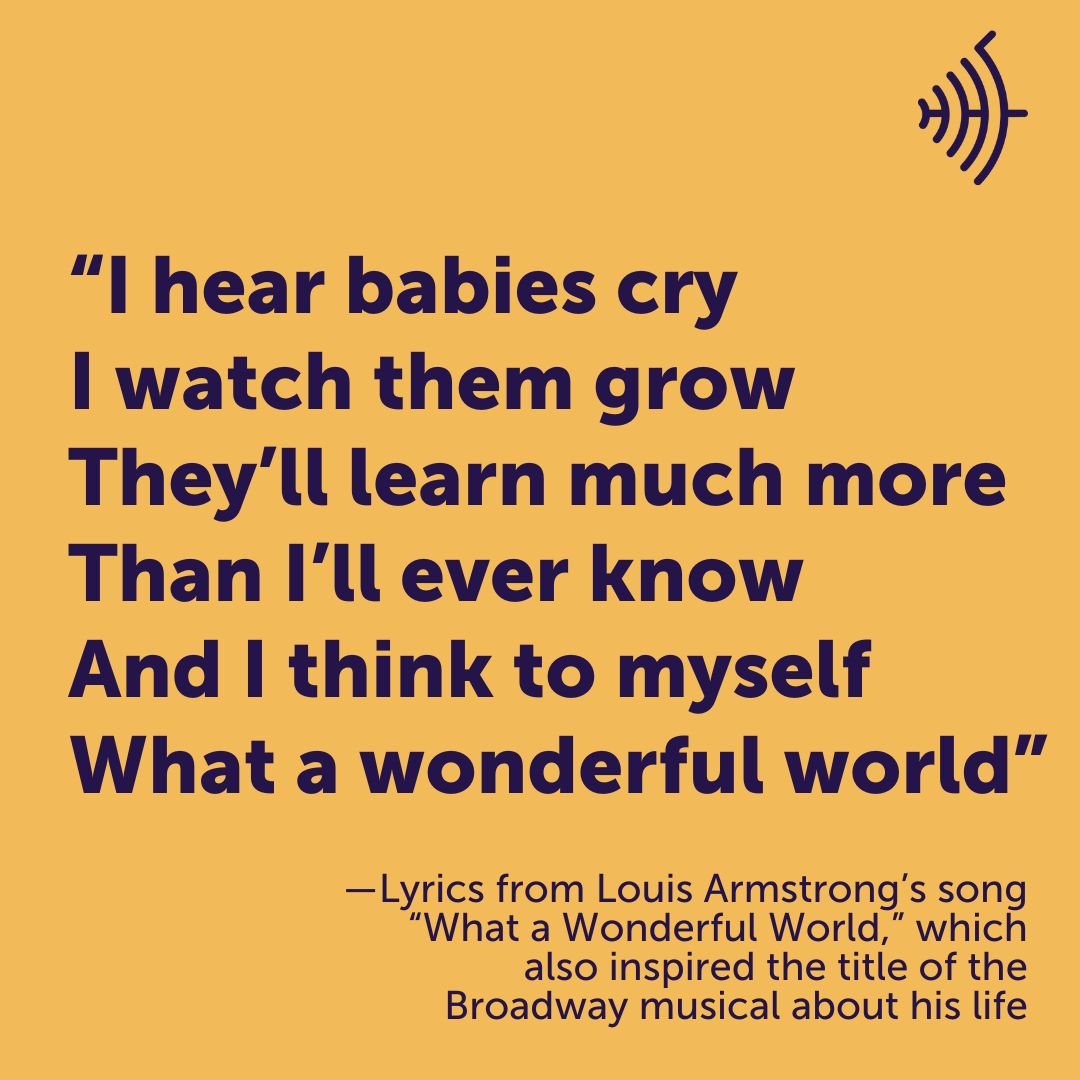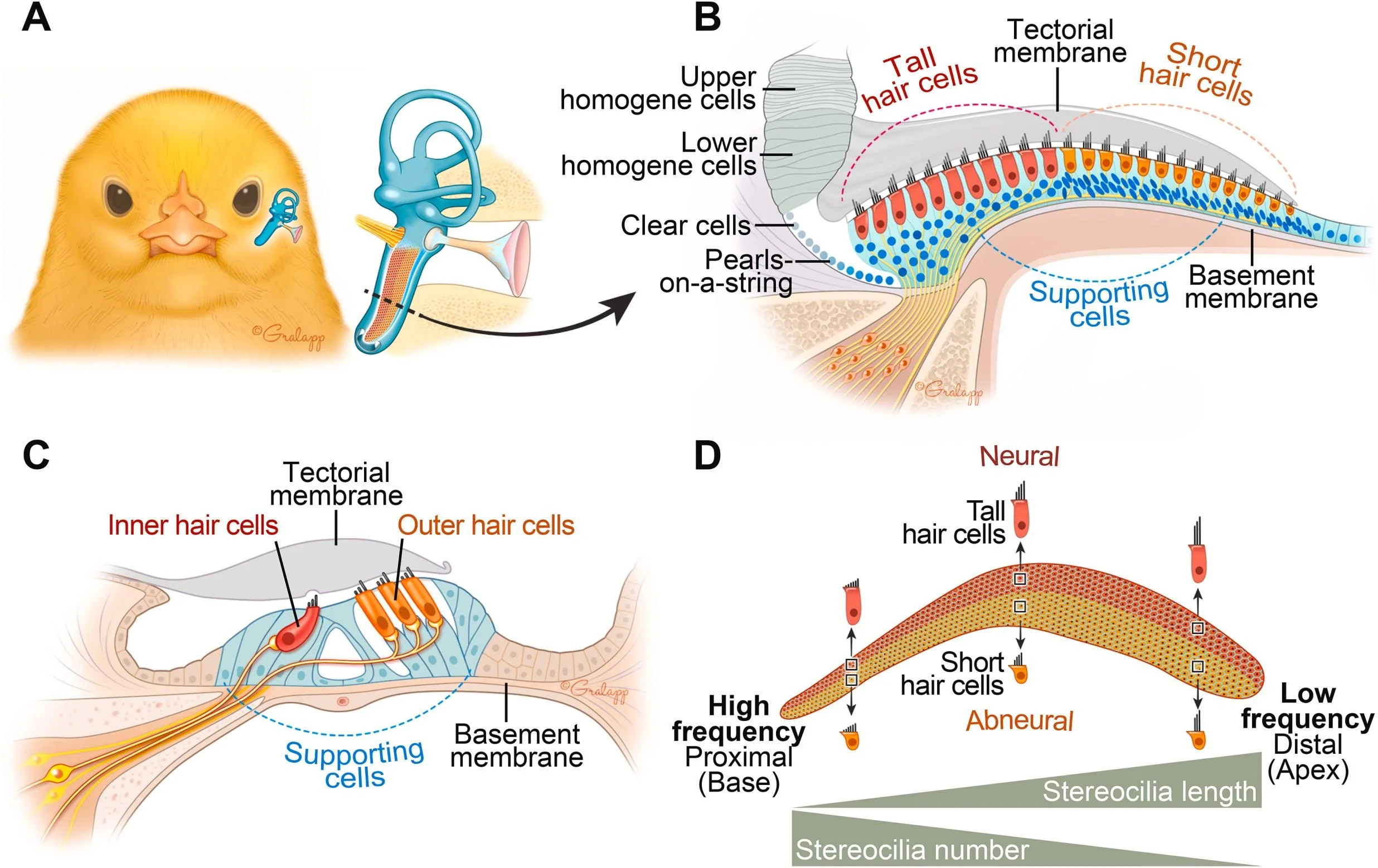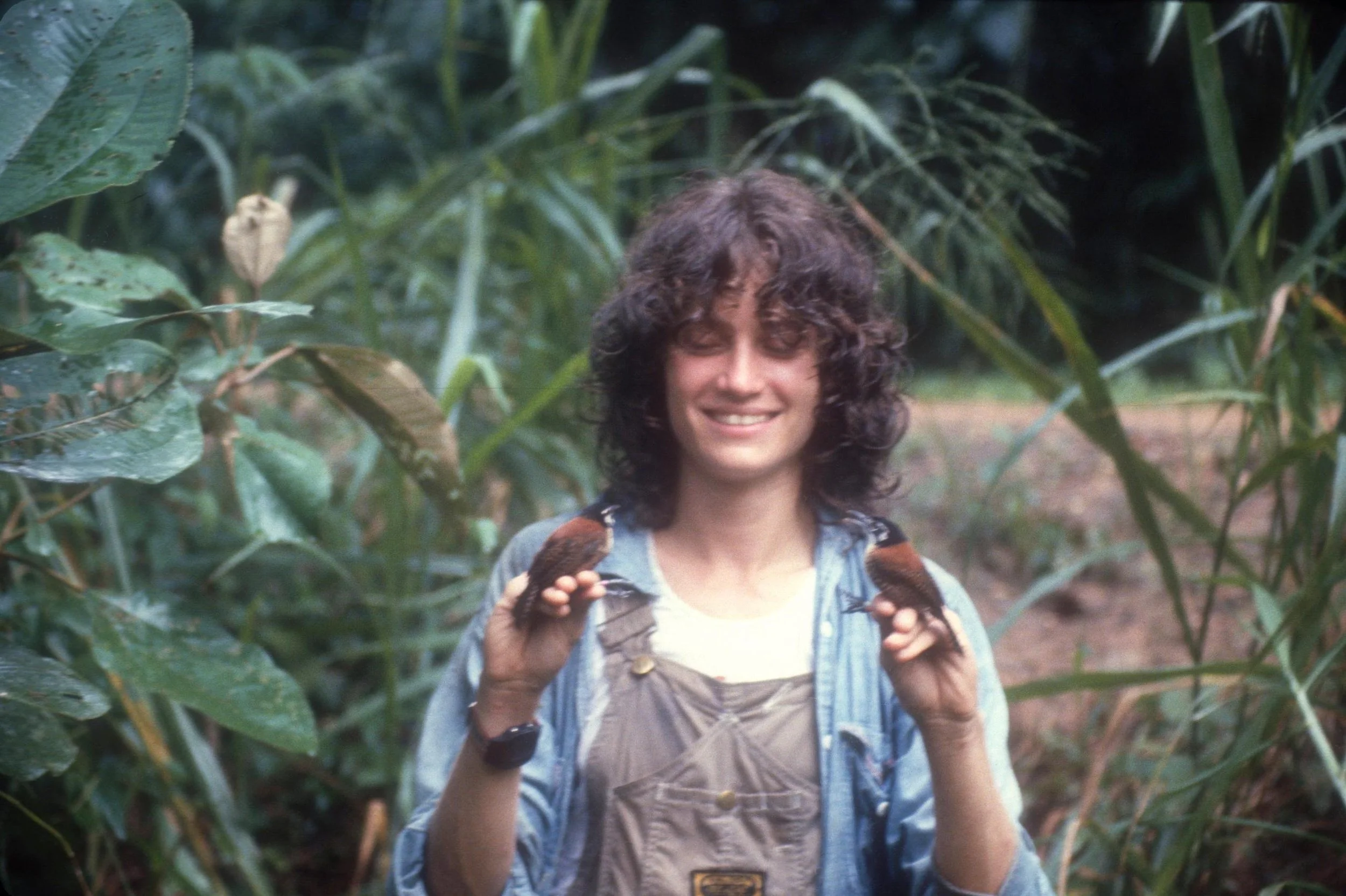Four breakthroughs this year show how advances in hearing research are changing lives.
By Anil K. Lalwani, M.D.
My wife and I recently went to see “A Wonderful World,” the musical about Louis Armstrong’s life. Naturally, it ends with the song "What a Wonderful World," celebrating blue skies, red roses, rainbows—all these beautiful, visual things.
Source: LyricFind
But as an ear doctor, my mind went to the sounds that make our world wonderful: the songs of birds, the hum of bees, harmony in music, and of course, Louis Armstrong’s voice and whatever music moves each of us. More importantly, though, are the voices we love—the “rainbow” of voices from our family members, our spouses, our children, and grandchildren.
For me, a truly wonderful world is about our auditory senses as much as the visual ones. And that’s what Hearing Health Foundation is all about—improving quality of life by enhancing our auditory experiences. In a way, Louis Armstrong’s song celebrates what we hear, not just what we see.
I’d like to share four important breakthroughs in hearing research over the past year, and how each also connects back to Hearing Health Foundation, to varying degrees.
These major advances offer hope for how we might improve or restore hearing and, by extension, bring a bit more of that wonderful world into everyone’s lives.
Breakthrough #1: Hearing Health and Brain Health
The first major area I want to highlight is the link between hearing loss and cognitive decline. One of the most impactful discoveries for the field of hearing health is the association between untreated hearing loss and early cognitive decline.
Many of my patients with hearing loss don’t want to wear hearing aids. They often view them as a sign of aging, or worry that it reflects negatively on their intelligence. But the demonstrated connection between untreated hearing loss and cognitive decline has drawn a lot of attention to our field.
This past year, a significant study called the ACHIEVE trial examined cognitive outcomes in people with and without hearing aids. The study—ACHIEVE stands for Aging and Cognitive Health Evaluation in Elders—compared cognition in those treated with hearing aids to those who didn’t receive them.
The broader results showed no difference in cognitive decline between the two groups, but a deeper analysis revealed that people at higher risk of dementia did benefit from wearing hearing aids.
This research is important because it highlights how central auditory processing is improved with hearing aids. They increase the signal-to-noise ratio, which helps us hear and process sounds more clearly.
However, the main takeaway from this study is not just about cognition. Hearing, and the richness of the auditory experience it provides, is valuable beyond its cognitive benefits. At the end of the day, what’s most important is simply being able to hear well and enjoy life fully—regardless of the specific cognitive outcomes.
While it’s wonderful that this study has drawn attention to the importance of hearing, let’s remember that hearing is vital in and of itself. I believe this is one of the most important findings in hearing health over the past year, and it’s something to keep in mind as we work to enhance quality of life through hearing.
Breakthrough #2: AirPods as Hearing Aids
The second major development in hearing health has been all over the news: using AirPods as over the counter (OTC) hearing aids.
Apple is a leader in design quality, and while we’ve seen many OTC hearing devices recently, the idea of using AirPods as hearing aids is especially exciting. One reason hearing aids haven’t always been embraced is visibility—people can see them.
But when you can’t tell the difference between an AirPod and a hearing aid, people are far more likely to wear these devices as they age. For a lot of people, visible things in their ears are nothing new. Those who are used to listening to music or podcasts through AirPods may find it natural to accept assistive devices that can enhance both music and speech. This addresses a major concern for people with hearing loss or cochlear implants: quality sound, including music.
What’s really interesting is the impact this could have on the market. With Apple’s reputation for high quality products, a device priced at under $300 could revolutionize access to affordable, effective amplification.
Hearing Health Foundation publicly supported federal approval of OTC devices. The aim of this new category is to improve access by lowering the barrier to entry for treating hearing.
But these OTC devices ended up costing anywhere from hundreds to thousands of dollars, often leaving buyers uncertain if their investment was worth it. Apple’s entry into this space sets a new standard, and competition will likely drive prices down over time.
While I don’t expect hearing aids to become cheap overnight, I do believe Apple’s entry into this market will bring about meaningful changes due to its focus on quality, design, and—let’s face it—coolness.
Breakthrough #3: Fully Implantable Cochlear Implants
In the next five to 10 years, we’re likely to see fully implantable cochlear implants become widely available. The latest trials in Europe have shown promising results, and this could be a game-changer for people who rely on cochlear implants.
This technology has come a long way since the 1960s, when William House, M.D., and Blair Simmons, M.D., invented the first cochlear implant in the 1960s. The implant required the patient to carry around a car battery to charge it.
After House developed the first wearable signal processor in 1972, the Deafness Research Foundation—the name of Hearing Health Foundation back then—began to fund his subsequent research to refine the implant for widespread use.
Breakthrough #4: Gene Therapy for Hearing Loss
And what is the most outstanding advance in hearing research this past year? Gene therapy for hearing loss.
Let me explain: When we think about hearing loss, we think about the loss of sensory hair cells in our inner ear. These hair cells take sound waves and translate them into electrical signals for our brain to interpret.
But when our hair cells are damaged or die, we can't sense sound. And if we can't sense sound, we can't hear.
There’s a particular hearing gene, DFNB9, associated with a protein called otoferlin. B stands for recessive, and nine means it was the ninth gene that was mapped.
Otoferlin is crucial because it helps the glutamate-filled vesicles in hair cells reach the cell wall, releasing glutamate when sound is detected. This neurotransmitter activity allows us to perceive sound.
What’s unique here is that with hearing loss caused by a variant of DFNB9 affecting otoferlin production, the hair cells aren’t dead—they’re still there but lack functional otoferlin. The hair cells aren’t damaged or missing, they just don’t work correctly.
The gene therapy breakthrough involves replacing this missing protein and has now, for the first time, shown that hearing can actually be restored. This is amazing and just the beginning.
Researchers used a virus, known as adeno-associated virus (AAV), to deliver the gene. And why is AAV the vector of choice? It’s safe—it doesn’t cause disease in humans and is quite innocuous, making it ideal for gene therapy.
Hearing Health Foundation funded research in my lab in the mid-1990s where we—for the first time—showed that the adeno-associated virus was the vector to put into the cochlea of the guinea pig, demonstrating a safe, successful gene transfer.
So there's a direct lineage between what Hearing Health Foundation funded in 1995 to the first successful gene therapy trial in 2024.
And that’s just one success story. Over the years, HHF has supported countless advances in hearing aids, auditory processing, and cochlear implants—transformative discoveries that are changing lives.
I can’t tell you how proud I am to have been involved with HHF for the last 30 years. I’ve been a new investigator funded by HHF—which is why I’m so passionate about the Emerging Research Grants—and I’ve also served as a grants reviewer. I’ve been on the Council of Scientific Trustees, which I chair, and it’s an honor to also serve on the board.
Our organization is unique—there’s no competitor in the field that matches our depth and passion, and it’s reflected in our board’s and staff’s dedication to advancing hearing health. Together, we’re not only advancing science but improving lives. We thank our entire community for joining us to make the world a little more wonderful—for everyone, everywhere.
Anil K. Lalwani, M.D., is a member of HHF's Board of Directors and the head of HHF's Council of Scientific Trustees, which oversees the Emerging Research Grants program. He is a professor and the vice chair for research in the department of otolaryngology–head and neck surgery, the associate dean for student research at Columbia Vagelos College of Physicians and Surgeons, and a co-director at the Columbia Cochlear Implant Program. Please also see our 2024 impact report detailing all of the papers published by our researchers this past fiscal year.
Products and services are not endorsed by Hearing Health Foundation and are provided for informational purposes only.








This study shows that a single variant in the Foxg1 gene can affect how the brain processes sounds and lead to a heightened sensitivity to noise.